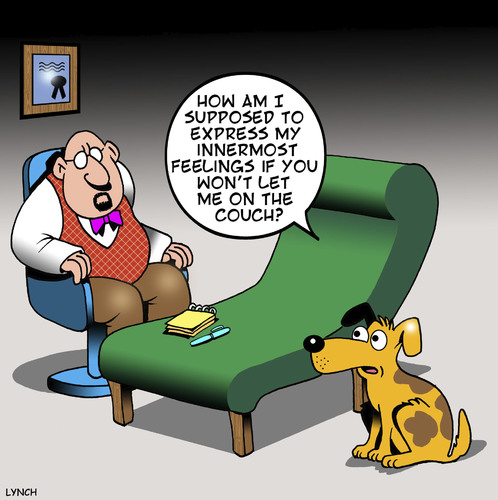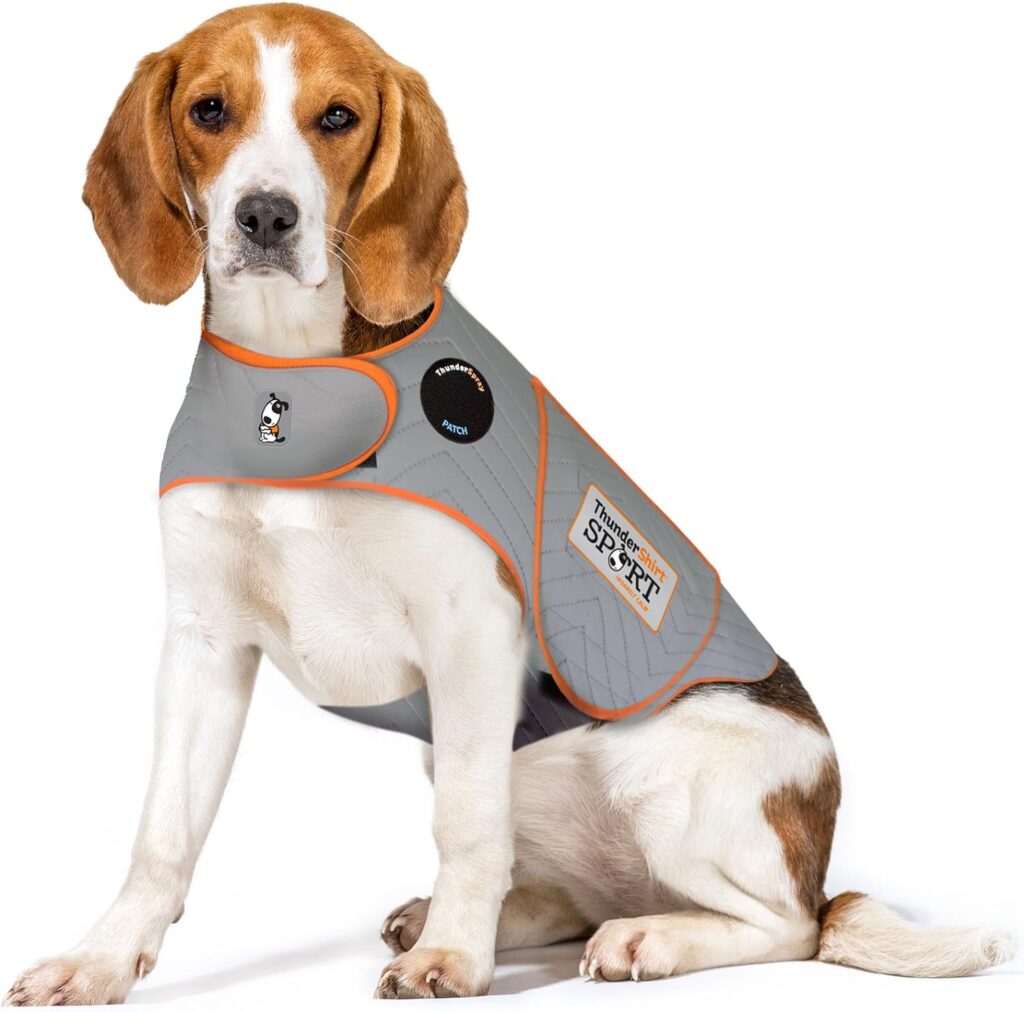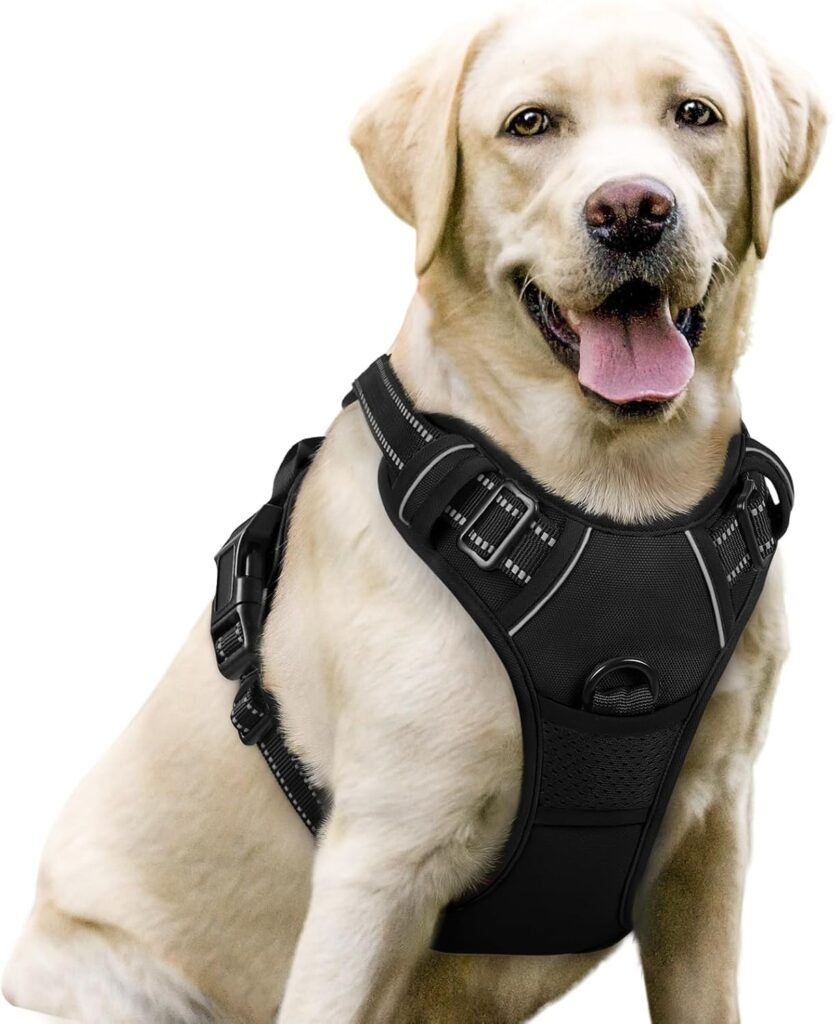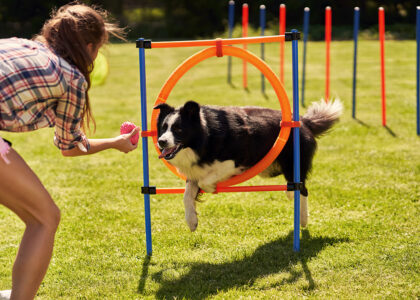Ever wonder what’s really going on in your dog’s mind? Those curious head tilts, zoomies, or even those guilty puppy eyes all mean something—and learning to understand your furry friend can completely transform your bond with them. By diving into canine psychology, you can create a happier, healthier life for your dog and yourself. Plus, with a few smart products, you can make it even easier.
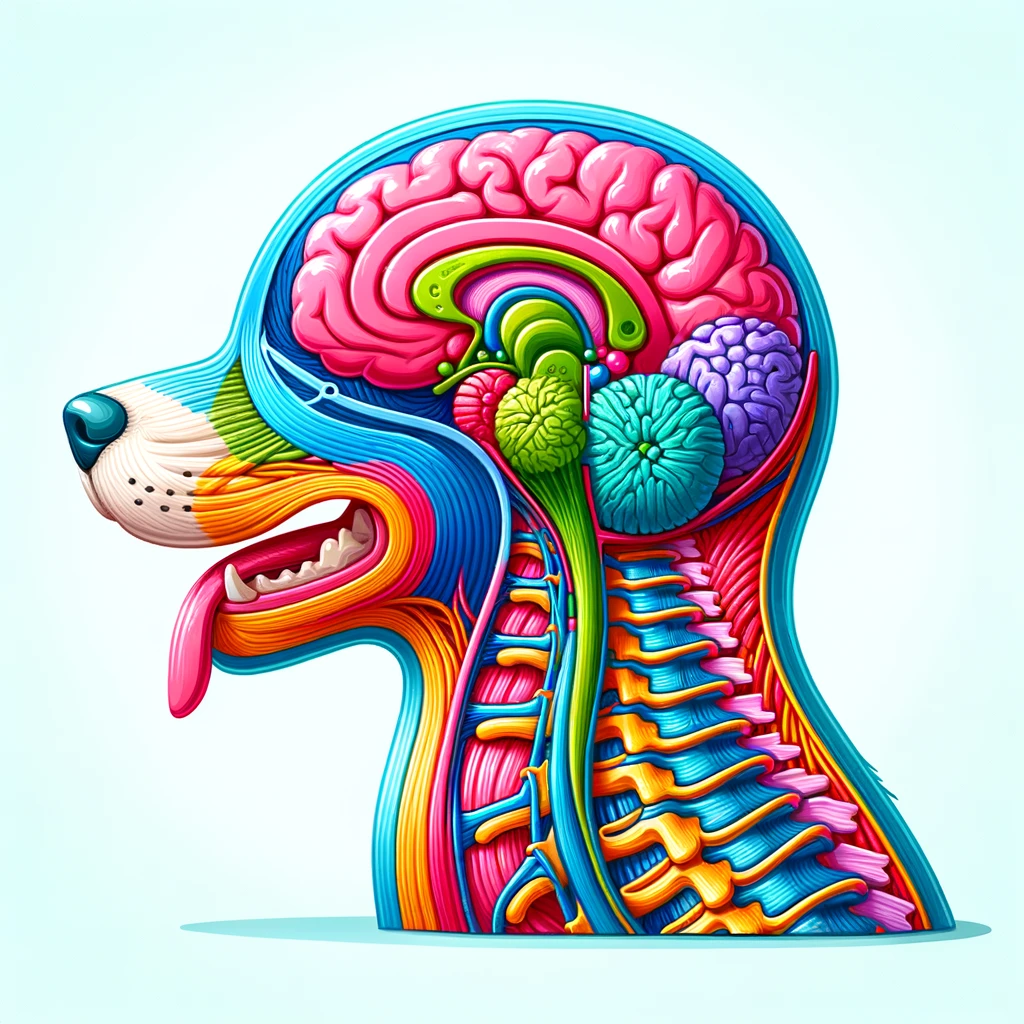
What Makes Your Dog Tick?
When you look into your dog’s eyes, do you wonder what’s going on behind that soulful gaze? Understanding canine psychology is more than just a delightful hobby for dog lovers; it’s a gateway to forming a deeper connection with your four-legged companion. This guide dives into the intricate workings of the canine mind, supported by scientific discoveries, fascinating real-life stories, and practical advice for better communication with your dog.
Canine Perception: A Sensory Symphony
Dogs experience the world differently from humans. While our reality is shaped predominantly by sight, dogs navigate their environment through a powerful sense of smell, acute hearing, and an uncanny ability to read body language.
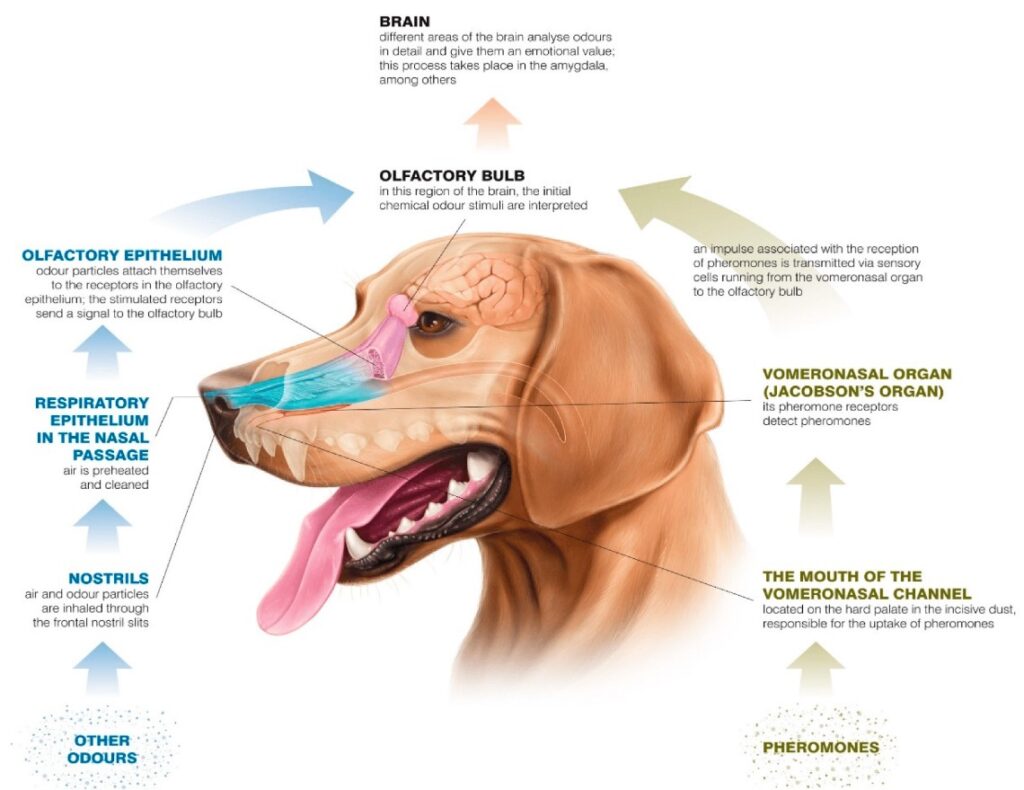
The Nose Knows
A dog’s sense of smell is their superpower. With up to 300 million olfactory receptors (compared to our measly 5 million), dogs can detect scents at concentrations as low as one part per trillion. This ability isn’t just for sniffing out treats or garbage; dogs have been trained to detect diseases like cancer, alert humans to seizures, and even locate endangered species.
Scientific Spotlight: Researchers at the University of Pennsylvania’s Working Dog Center are exploring how dogs can detect COVID-19 infections by scent. Preliminary studies show accuracy rates of over 90%, a testament to their remarkable olfactory capabilities.
Ears That Hear What We Don’t
Dogs hear sounds in frequencies ranging from 40 Hz to 60,000 Hz, far surpassing the human range of 20 Hz to 20,000 Hz. This acute hearing allows them to pick up on subtle changes in tone, which is why they often sense our moods based on how we speak.
Quirky Fact: Ever noticed your dog tilting their head during a conversation? This adorable gesture might help them pinpoint the exact location of a sound or better understand the emotions behind your words.
Emotional Intelligence in Dogs
Dogs are not just reactive creatures; they are emotionally intelligent beings capable of empathy, attachment, and even grief. Their emotional lives are nuanced and often mirror our own.
The Power of Oxytocin
When you gaze lovingly at your dog and they gaze back, something magical happens: both of your oxytocin levels spike. Often called the “love hormone,” oxytocin strengthens the bond between dogs and their humans, making interactions deeply rewarding for both parties.
Scientific Breakthrough: A study published in Science revealed that mutual gazing between dogs and their owners triggers a positive feedback loop of oxytocin, similar to the bond formed between parents and their infants.
Do Dogs Feel Empathy?
Numerous anecdotes and studies suggest that dogs can empathize with human emotions. A famous experiment by Dr. Deborah Custance and Jennifer Mayer showed that dogs approached distressed humans—even strangers—to offer comfort, often nuzzling or resting their heads on the person’s lap.
True Story: A Labrador Retriever named Mahe developed an unbreakable bond with his autistic owner, James. During moments of distress, Mahe would snuggle close to James, calming him in ways no human could. Mahe’s ability to sense and soothe James’s anxiety showcases the profound empathy dogs can exhibit.

Cognitive Abilities: Problem-Solving and Learning
Dogs are far from mindless followers; they are thinkers, problem-solvers, and learners. Cognitive science has unveiled some astonishing aspects of canine intelligence.
Vocabulary Wizards
Border Collies are renowned for their intelligence, with some individuals showcasing exceptional linguistic abilities.
Case Study: Chaser the Border Collie
Chaser, often dubbed the “smartest dog in the world,” knew the names of over 1,000 objects. Her owner, Dr. John Pilley, used a mix of repetition and play to teach her. Chaser could not only fetch specific items but also categorize them (e.g., distinguishing between toys and balls). This remarkable feat demonstrated that dogs could grasp abstract concepts.
Theory of Mind in Dogs
Do dogs understand that other beings have their own thoughts and intentions? Some researchers argue yes. A study by Dr. Juliane Kaminski showed that dogs are more likely to steal food when they think they aren’t being watched, suggesting they can consider another’s perspective.
Fun Experiment: Try placing a treat on the floor and tell your dog to leave it. Then, cover your eyes. Chances are, your dog will seize the opportunity—a cheeky demonstration of their ability to outsmart us!
Real-Life Tales of Canine Intelligence
Stories of dog brilliance abound, proving that their intelligence often transcends our expectations.
Hachiko’s Unwavering Loyalty
In 1920s Japan, an Akita named Hachiko would wait for his owner, Professor Ueno, at Shibuya Station every day. Even after Ueno’s sudden death, Hachiko continued to wait at the station for nearly a decade. His story became a national symbol of loyalty and love, immortalized in statues and films.
Bretagne: The 9/11 Search Dog
Bretagne, a Golden Retriever, worked tirelessly at Ground Zero following the September 11 attacks. Her ability to locate survivors and provide comfort to rescuers highlighted not only her physical capabilities but also her emotional resilience.
Rico the Wordsmith
Rico, another Border Collie, knew over 200 words and could infer the names of new objects through a process called exclusion learning. When presented with a familiar toy and an unfamiliar one, Rico correctly retrieved the new item upon hearing an unfamiliar word, showcasing sophisticated cognitive reasoning.
Products That Can Change the Game
To help you give your dog the best life possible, here are some of the best products to support their mental health, reduce stress, and make your bond even stronger.
1. Puzzle Toys for Mental Stimulation
Keeping your dog’s mind active is just as important as physical exercise. Puzzle toys like the Outward Hound Nina Ottosson Puzzle Feeder or the Joansan Dog Puzzle Toy challenge your dog to solve problems and reward them with treats. These toys are amazing at keeping your dogs attention while helping them generate new activities that are brain building. It’s a win-win—they stay entertained, and your furniture stays intact.
2. Stress-Relief Must-Haves
Is your dog a little nervous, especially during thunderstorms or when you leave the house? Products like the Thundershirt Classic Anxiety Jacket apply gentle pressure, almost like a comforting hug, to help calm their nerves. Pair it with Zesty Paws Calming Bites, which use natural ingredients like chamomile to keep them relaxed.
3. Tools for Training and Bonding
Training isn’t just about teaching tricks—it’s a great way to build trust. Start with a simple clicker like the PetSafe Clik-R Dog Training Clicker to reward good behavior. And for those pulling-on-the-leash struggles, the Rabbitgoo No-Pull Harness offers control without discomfort.
4. Chew and Enrichment Toys
Dogs need outlets for their energy, and chew toys are a lifesaver. The KONG Classic Dog Toy is a favorite for good reason—fill it with peanut butter or freeze a treat inside to keep your pup busy for hours. For dogs that don’t chew but like to dig, snuff out under the snow or if you would like to introduce more engaging fun, try a Snuffle Mat, which taps into their natural foraging instincts.
Scientific Breakthroughs in Canine Psychology
The field of canine psychology has seen significant advancements, shedding light on how dogs think, feel, and learn.
Canine Cognitive Dysfunction (CCD)
Similar to Alzheimer’s in humans, CCD affects senior dogs, leading to symptoms like disorientation and memory loss. Early detection and interventions, such as dietary changes and mental stimulation, can improve quality of life.
Dogs and MRI Studies
Pioneering research using functional MRI scans has allowed scientists to study the canine brain in unprecedented detail. Dr. Gregory Berns’s work at Emory University revealed that dogs’ brain activity mirrors human responses to rewards and emotional stimuli, underscoring their capacity for complex emotions.
Decoding Canine Communication
To truly understand your dog, it’s essential to grasp their language—a mix of vocalizations, body signals, and facial expressions.
Tail Wagging: More Than Meets the Eye
A wagging tail doesn’t always mean happiness. Research indicates that the direction of the wag can signal a dog’s emotional state. Right-sided wags are associated with positive feelings, while left-sided wags can indicate anxiety or caution.
The Subtle Art of Ears
Dogs use their ears to communicate everything from curiosity to fear. Perked ears often signify interest, while flattened ears might indicate submission or fear.
The Future of Dog Psychology
As technology and science advance, our understanding of dogs will only deepen. From AI-assisted behavioral analysis to genetic studies on breed-specific traits, the future promises groundbreaking insights into our beloved companions.
Conclusion: Embrace the Mystery
Understanding your dog’s mind is a journey, not a destination. Each tail wag, bark, and curious glance is an opportunity to learn more about the creature who loves you unconditionally. By embracing the science of canine psychology and nurturing your dog’s mental and emotional well-being, you’re not just unlocking their mind—you’re enriching your own life in ways only a dog can inspire.

